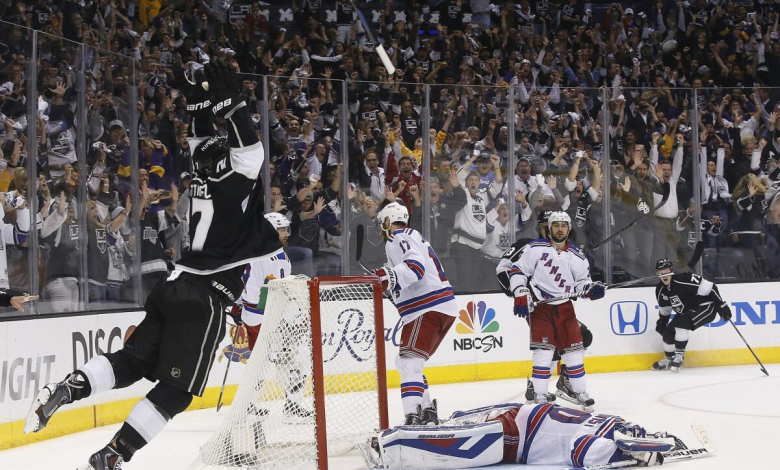Stanley Cup Playoff Betting: Tips for Overtime Thrillers

Few moments in sports compare to sudden-death overtime in the Stanley Cup Playoffs. Every shot carries weight, every shift could be the last, and the energy in the arena shifts with each change of possession. For bettors, these overtime battles introduce a new layer of unpredictability and opportunity. However, wagering on extra-time playoff games requires a refined approach. Understanding historical patterns, game flow, and betting markets can help turn chaos into calculated risk.
Analyze Shifts in the Playoff Landscape
To bet overtime correctly, you first need to accept how common it actually is in the postseason.
Stanley Cup playoff games go to overtime at a significantly higher rate than regular-season matchups. Defensive intensity rises, teams tighten their systems, and scoring becomes harder late in regulation. In the first round alone, roughly one in four games typically heads to sudden death. That’s not a fluke—it’s a pattern.
This frequency shifts how you view certain bets. If you’re backing a favorite with a tight moneyline, ask yourself whether you’re comfortable with the possibility of them needing overtime to win. Winning in 60 minutes and winning outright aren’t always interchangeable. If you suspect a close matchup, betting the regulation draw or taking the underdog with an “OT included” wager can protect you from sudden-death volatility.
Look beyond seeding and focus on stylistic matchups. Teams with conservative forechecks and structured neutral-zone play tend to grind out low-event games that naturally lean toward overtime. Identifying these tendencies in advance gives you an edge where the public might overlook a slower pace.
Understand the Betting Markets
Overtime odds are potentially profitable for well-informed bettors.
The postseason introduces a different rhythm, and betting markets evolve to match it. With tighter games and more conservative play, sportsbooks offer specialized lines tailored to playoff dynamics. These aren’t just novelties—they’re tools for bettors who understand the flow of sudden-death hockey.
One of the more underused opportunities is the “Regulation Draw” market, where you’re betting on a game to reach overtime. Payouts usually range from +280 to +350, offering strong value when both teams bring strong goaltending and cautious third-period strategies. These aren’t guesses; they’re calculated decisions rooted in how playoff hockey unfolds.
This type of strategic angle is what separates casual wagering from intelligent betting on the Stanley Cup. The margins shrink in post-season hockey, and sharp bettors lean into markets that reflect that reality. Whether it’s predicting overtime, taking advantage of alternate winning methods, or identifying fatigue in later games, the Cup’s playoff structure opens up lines you won’t find in the regular season.
Live betting adds even more opportunity. In tied games entering the third period, you may find value in the “Will there be overtime?” line—especially if both teams settle into a risk-averse tempo. This is where preparation and a clear read on momentum provide the edge. Understanding the market is one thing, but timing it correctly is what makes it count.
Stay Sharp During Sudden Death Chaos
You can’t predict who scores in overtime, but you can manage risk around it.
Once regulation ends, everything tightens. Coaches shorten their benches, players conserve energy, and every mistake feels amplified. For bettors, this isn’t the time to act on impulse—it’s the moment to reassess based on real-time performance and preparation.
That preparation should go beyond stats. Understanding coaching tendencies, line combinations, and how teams handle pressure is critical. You don’t need a crystal ball—you need the latest NHL team insights. These updates help you anticipate who will take the ice in high-leverage moments and which players a coach leans on when fatigue starts to show. If a top-pair defenseman is logging heavy minutes or a second-line center has lost shifts late in regulation, it matters.
This context also helps you decide when to hedge a bet or double down. For example, if you backed Team A pregame, but Team B controlled puck possession for the last ten minutes, the smart move might be a small live wager on Team B in overtime. You’re adjusting to what the game is telling you—not just what the odds board says.
Avoid chasing player props in sudden death unless you’ve tracked usage trends. Coaches trust specific skaters in overtime—usually those with stamina, poise, and two-way responsibility. Bettors who’ve kept up with those details stand a better chance of identifying value in high-stakes, unpredictable moments.
Look for Key Metrics That Signal a Game Headed for OT
Certain statistical flags can help predict which matchups are more likely to go past regulation.
Start with the pace of play. Games where both teams average fewer than 10 high-danger chances per 60 minutes often indicate low offensive output and higher overtime potential. These aren’t the back-and-forth track meets—they’re tactical chess matches.
Also, look at goaltending. If both netminders are posting save percentages north of .920 in the series, scoring becomes harder, and the game script tends to flatten out. Overtime thrives in these environments. You’re not just betting on which team has better scorers but whether the defenses and goalies can hold off late pushes.
Special teams also play a role. In playoff hockey, referees call fewer penalties, and power-play opportunities drop. That means fewer easy scoring chances. If neither team capitalizes on the man advantage, five-on-five play drives the result, often leading to regulation stalemates.
Dig into the shot quality. Two teams can register 30+ shots, but if most attempts come from the outside, goalies see the puck cleanly, and scoring stays suppressed. Games with high volume but low shot danger can lull bettors into thinking goals are coming when, in fact, overtime looms.
Overtime in the Stanley Cup Playoffs isn’t just a dramatic twist—it’s a strategic opportunity. When others chase narratives or overreact to close games, informed bettors stay grounded in data, game flow, and discipline. Use overtime as an edge, not an obstacle. With proper preparation, you won’t just survive sudden death—you’ll profit from it.



